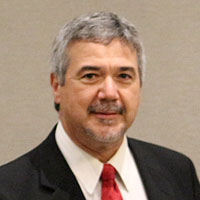NeuroTech Reports
Several hundred pain clinicians attended the 28th Napa Pain Conference in Napa, CA earlier this month. The event, produced by Neurovations Education, took place at the Culinary Institute of America’s Copia facility, with participation from online attendees.
Featured presenters at the event included Daniel Carr, professor emeritus of public health at Tufts University, Carol Warfield, Edward Lowenstein professor of anesthesia at Harvard University, and Nobel laureate Elizabeth Blackburn, professor emerita of biochemistry and biophysics at UC San Francisco.
On the first day of the conference, Samer Narouze, chairman of the center for pain medicine at Western Reserve Hospital in Ohio, gave a talk on headache pain and SPG neuromodulation. “I think it’s time to pay more attention to head neck and face pain because they are very prevalent,” he said, citing CDC statistics that showed that 14 percent of adults suffer from migraine or severe headache and that 20 percent of those don’t respond to or cannot tolerate medications.
Narouze presented an overview of the innervation underlying craniofacial pain, including sympathetic, parasympathetic, and trigeminal nerves. He discussed two major clinical trials of occipital nerve stimulation for the treatment of intractable chronic migraine, including a 2010 report of the ONSTIM study published in Cephalalgia that showed a three-month
responder rate of nearly 40 percent. Lead migration of 14 percent was caused in part by using off-the-shelf components, he said.
A later study of ONS by Dodick et al in 2014, also published in Cephalagia, showed very good results, including meeting all of its secondary endpoints. But the trial failed to meet its FDA-man- dated primary endpoint of 50 percent pain reduction in 50 percent of the subjects, a metric Narouze called “unrealistic.” He said that a 30 percent reduction in pain would have been a more reasonable endpoint. “For FDA approval of a new medication, they are looking to get 30 percent pain reduction,” he noted.
Narouze then discussed the anatomy of the SPG and explained while it was an attractive target for neuromodulation. He related his experience implanting devices in the SPG, but noted that sub-optimal lead placement could lead to a lack of headache relief.
Richard Rosenquist, chairman of the department of pain management at the Cleveland Clinic, gave a comprehensive review of spine neuromodulation therapies. He traced the evolution of SCS systems and the indications they targeted, from the original tonic stimulation for failed back surgery and intractable lower back pain, to high-frequency stimulation for non-surgical back pain to SCS for refractory angina, to painful diabetic neuropathy. “Indications keep expanding
and expanding,” he said.
Rosenquist also highlighted key clinical trials that supported the market entry of SCS for new indications. Among the significant trials that he described were trials of burst stimulation, DTM neuromodulation, and ECAP-controlled closed-loop stimulation. But Rosenquist worried that insurance companies were pushing back on some of the new technologies and applications of SCS. As an example, he cited United Healthcare’s recent noncoverage decision for DRG stimulation.
Kathleen Meacham from Washington University School of Medicine spoke about personalized patient care using neuromodulation. She contrasted the engineer’s approach to curing pain, which asked stimulation therapies relieve pain, versus a clinician’s approach to treating patients in the real world.
Meacham said she expects sensor integration to be a key feature in future pain neuromodulation systems. “Sensor incorporation is in its infancy, and I expect it’s going to take off very quickly,” she said. Specifically, she mentioned measuring signals such as impedances, or ECAPs and including gyroscopes in the closed-loop feedback process.
Neuromodulation firms exhibiting at the conference included Medtronic, Boston Scientific, Abbott, Nevro, Avanos, Saluda Medical, electroCore Medical, and Applied VR.
The post Pain Doctors Discuss Therapies and Clinical Trends at 2021 Napa Pain Conference appeared first on Neurovations.

